
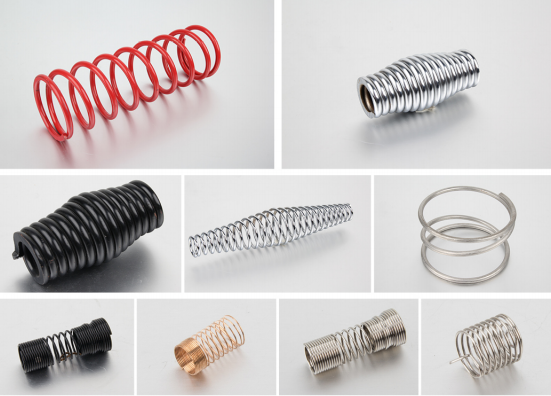
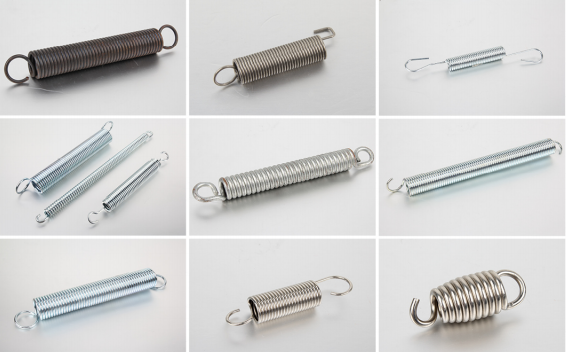
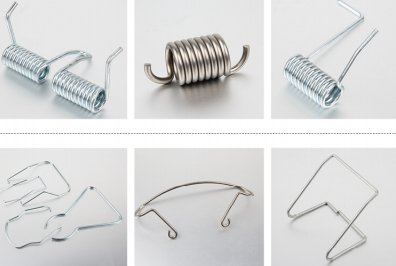
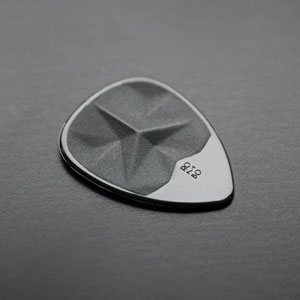
Unsere Federn werden so gestaltet, dass sie genaue Spezifikationen erfüllen, Gewährleistung einer überlegenen Leistung und Zuverlässigkeit.

Von Edelstahl bis hin zu speziellen Legierungen, Wir arbeiten mit einer Vielzahl von Materialien zusammen, um Ihre Anforderungen zu erfüllen.

Ob Sie Kompressionsfedern benötigen, Torsionsfedern, Verlängerungsfedern, oder Drahtformen, Wir liefern benutzerdefinierte Lösungen.

Direkte Fabrikpreise stellt sicher, dass Sie den besten Wert für die höchste Qualität erhalten.
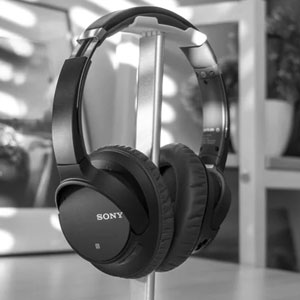
Mit optimierten Prozessen können wir Ihre Bestellungen pünktlich abgeben, Jedes Mal.

Wir kümmern uns effizient über die internationale Logistik, um irgendwo auf der Welt zu liefern.
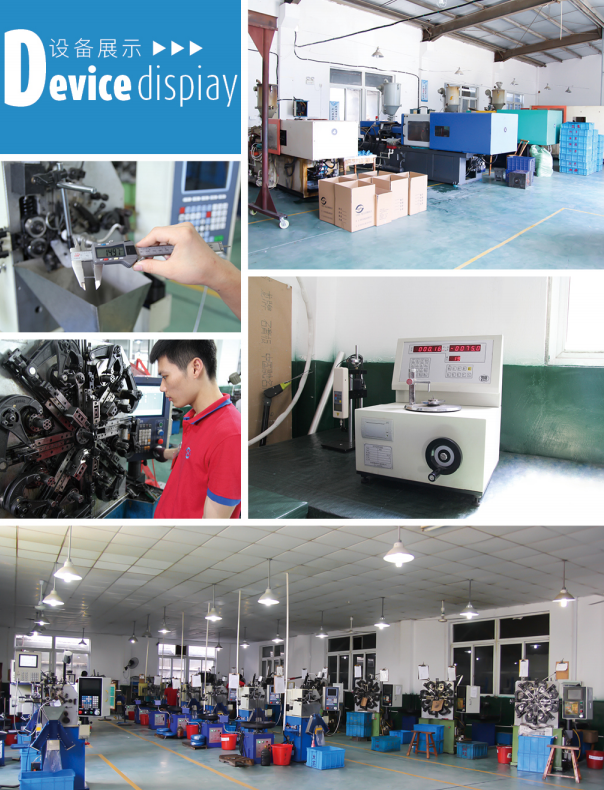
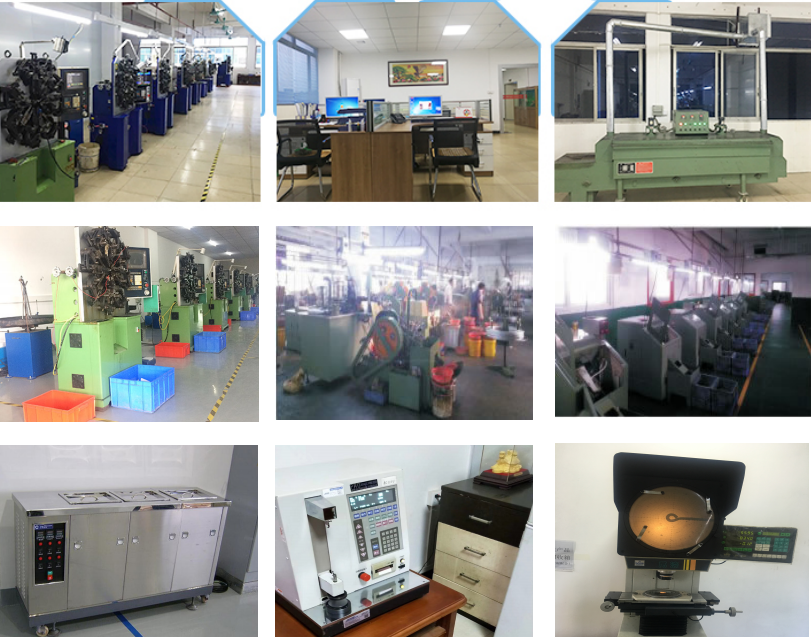
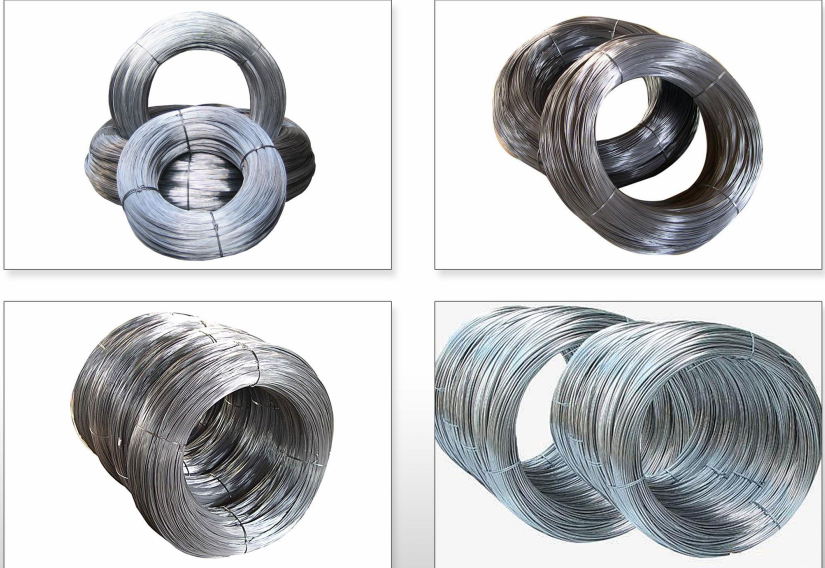
Springs are the unsung heroes in many industries, providing the flexibility, strength, and precision needed for countless applications. Whether you’re designing high-performance machinery or everyday tools, selecting the right material ensures reliability, Haltbarkeit, und Kosteneffizienz. Let’s break down the essentials to help you make an informed decision!
Spring steels are incredibly popular due to their combination of elasticity, tensile strength, and fatigue resistance. They’re ideal for applications where springs are under constant stress or load.
If your application involves exposure to moisture, chemicals, or extreme weather, stainless steel is your go-to material. These alloys are resistant to rust and ensure long-lasting performance.
Sometimes, your application calls for something extra. That’s where specialty materials like superalloys and high-strength composites come in.
Case 1: Marine Equipment Manufacturer
A client designing springs for deep-sea applications chose 316L stainless steel for its superior resistance to saltwater corrosion. This decision doubled the service life of their products and reduced maintenance costs by 30%.
Case 2: Heavy Machinery Builder
A manufacturer of industrial presses switched to SWP alloy steel for their tension springs. The result? Springs withstood 20% higher loads and lasted 50% longer under continuous operation.
Case 3: Food Processing Startup
For springs in food slicers, 304 stainless steel was the perfect choice due to its affordability and compliance with food safety standards. The startup saved 15% on costs while ensuring hygienic performance.
| Serial No. | Steel Grade | C (%) | Si (%) | Mn (%) | Cr (%) | Mo (%) | V (%) | B (%) | Ni (%) | Cu (%) | P (%) | S (%) |
|---|---|---|---|---|---|---|---|---|---|---|---|---|
| 1 | 65 | 0.62–0.70 | 0.17–0.37 | 0.50–0.80 | ≤ 0.25 | — | — | — | 0.25 | 0.25 | ≤ 0.035 | ≤ 0.035 |
| 2 | 70 | 0.62–0.75 | 0.17–0.37 | 0.50–0.80 | ≤ 0.25 | — | — | — | 0.25 | 0.25 | ≤ 0.035 | ≤ 0.035 |
| 3 | 85 | 0.72–0.85 | 0.17–0.37 | 0.50–0.80 | ≤ 0.25 | — | — | — | 0.25 | 0.25 | ≤ 0.035 | ≤ 0.035 |
| 4 | 65Mn | 0.62–0.70 | 0.17–0.37 | 0.90–1.20 | ≤ 0.25 | — | — | — | 0.25 | 0.25 | ≤ 0.035 | ≤ 0.035 |
| 5 | 55Si2Mn | 0.52–0.60 | 1.50–2.00 | 0.60–0.90 | ≤ 0.35 | — | — | — | 0.35 | 0.35 | ≤ 0.035 | ≤ 0.035 |
| 6 | 55Si2MnB | 0.52–0.60 | 1.50–2.00 | 0.60–0.90 | ≤ 0.35 | — | — | 0.0005–0.004 | 0.35 | 0.35 | ≤ 0.035 | ≤ 0.035 |
| 7 | 55Si2Mn VB | 0.52–0.60 | 0.70–1.00 | 1.00–1.30 | ≤ 0.35 | — | 0.08–0.16 | 0.0005–0.0035 | 0.35 | 0.35 | ≤ 0.035 | ≤ 0.035 |
| 8 | 60Si2Mn | 0.56–0.64 | 1.50–2.00 | 0.60–0.90 | ≤ 0.35 | — | — | — | 0.35 | 0.35 | ≤ 0.035 | ≤ 0.035 |
| 9 | 60Si2MnA | 0.56–0.64 | 1.60–2.00 | 0.60–0.90 | ≤ 0.35 | — | — | — | 0.35 | 0.35 | ≤ 0.035 | ≤ 0.030 |
| 10 | 60Si2CrA | 0.56–0.64 | 1.40–1.80 | 0.40–0.70 | 0.70–1.00 | — | — | — | 0.25 | 0.25 | ≤ 0.035 | ≤ 0.030 |
| 11 | 55CrVA | 0.56–0.64 | 1.40–1.80 | 0.40–0.70 | 0.90–1.20 | — | 0.10–0.20 | — | 0.25 | 0.25 | ≤ 0.035 | ≤ 0.035 |
| 12 | 60CrMnA | 0.56–0.64 | 0.17–0.37 | 0.70–1.00 | 0.70–1.00 | — | — | — | 0.25 | 0.35 | ≤ 0.035 | ≤ 0.035 |
| 13 | 50CrVA | 0.46–0.54 | 0.17–0.37 | 0.50–0.80 | 0.80–1.10 | — | 0.10–0.20 | — | 0.25 | 0.25 | ≤ 0.035 | ≤ 0.035 |
| 14 | 30CrV2A | 0.26–0.34 | 0.17–0.37 | ≤ 0.40 | 2.00–2.50 | — | 0.50–0.80 | 4.4–5.0 | 0.35 | 0.35 | ≤ 0.035 | ≤ 0.035 |
Spring heat treatment is essential for optimizing mechanical properties, Haltbarkeit sicherstellen, und Verbesserung der Müdigkeitsresistenz. Verschiedene Stärkungstechniken, wie das Löschen, Temperieren, und Oberflächenbehandlungen, werden basierend auf Materialtyp- und Anwendungsanforderungen angewendet.
Der Wärmebehandlungsprozess für Federn kann in drei Arten kategorisiert werden:
Der Quenching -Prozess sorgt für eine einheitliche martensitische Transformation, gefolgt von Tempering, um Stress zu lindern und die Zähigkeit zu verbessern. Techniken wie das isotherme Temperieren verbessern die Plastizität und Zähigkeit weiter, ensuring the spring maintains dimensional accuracy and mechanical stability.
| Process Type | Description | Materials Used | Key Effects |
|---|---|---|---|
| Quenching & Tempering | Heating above Ac3, holding, then rapid cooling and tempering. | High-carbon steel, Legierungsstahl | Increases strength, hardness, and elasticity. |
| Kaltarbeit Stärkung | Uses mechanical deformation instead of heat treatment. | Stainless steel wire, cold-rolled steel strips | Enhances work-hardening properties. |
| Alterungsbehandlung | Additional heat stabilization after initial processing. | Certain alloy materials | Improves stability and strength. |
| Isothermal Quenching | Maintains temperature above Ms, cools in molten salt. | High-carbon steel, alloy springs | Enhances toughness and plasticity. |
| Controlled Tempering | Gradual cooling to prevent deformation. | Precision springs, mechanical components | Reduces internal stress and ensures accuracy. |
This structured approach ensures that each heat treatment method is aligned with specific material properties and application requirements for optimized performance.
The heat treatment of springs:
| Method | Process Description | Key Benefits | Gemeinsame Anwendungen |
|---|---|---|---|
| Conventional Heat Treatment | Heating and cooling steel to adjust mechanical properties | Increases strength, Elastizität, and durability | Medium to high-carbon steel springs |
| Surface Hardening Treatment | Carburizing, nitriding, or induction hardening of the outer layer | Enhances wear resistance while keeping core toughness | Automotive and industrial springs |
| Aging & Tempering | Heat treatment to relieve internal stresses and refine microstructure | Improves stability and mechanical consistency | Precision and high-load springs |
| Steel Grade | Austenitizing Temperature (°C) | Isothermie -Löschungstemperatur (°C) | Kühlzeit (min) | Härte (HRC) |
|---|---|---|---|---|
| 65 | 820 ± 10 | 320 - - 340 | 15 - - 20 | 46 - - 48 |
| 60Si2MnA | 870 ± 10 | 260 | 20 - - 25 | 50 - - 52 |
| 50CrVA | 850 ± 10 | 300 | 20 - - 25 | 55 - - 57 |
| Stahltyp | Wärmebehandlungsprozess | Härte (HRC) | Zugfestigkeit (MPA) | Ertragsfestigkeit (MPA) | Verlängerung (%) | Aufprallzählung (J/cm²) |
|---|---|---|---|---|---|---|
| 50CrVA | Konventionelles Löschen + Tempering | 48 | 1750 | 1500 | 10 | 44 |
| 60Si2MnA | Isothermal Quenching + Tempering | 47 | 1900 | 1750 | 11 | 46 |
| 65S2mnwa | Isothermal Quenching + Tempering | 50 | 2100 | 1980 | 9 | 43 |
Dieses Tabellenformat bietet einen klaren und organisierten Vergleich verschiedener Wärmebehandlungstechniken für Federn.

Xiamen Linsping konnte meine kundenspezifische Bestellung für Spezifikationen herstellen und waren hilfsbereit und unterwegs auf dem Weg. Die Qualität des gelieferten Produkts war gut.

Dies war meine zweite Bestellung bei Linsping. Der Verkäufer ist großartig zu kommunizieren und der Frühling war perfekt,Genau wie die erste Bestellung. Vielen Dank für Ihre Aufforderung,höflich.

Sehr zufrieden mit unseren individuellen Quellen. Pünktlich und der Versand war schnell



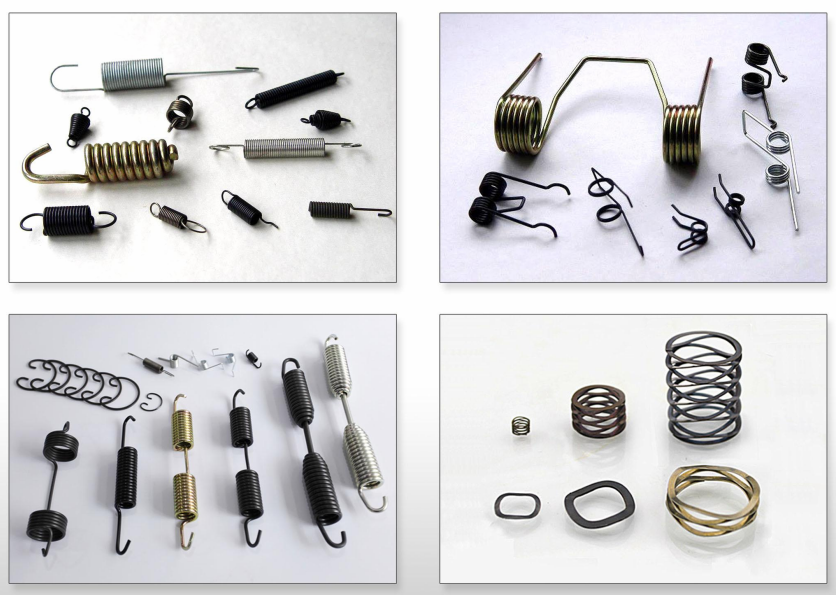
Federn sind wesentliche Komponenten in unzähligen Branchen, Von Automobil- und Luft- und Raumfahrt bis hin zu medizinischen Geräten und Haushaltsgeräten. Brauchfedern, insbesondere, Bieten Sie maßgeschneiderte Lösungen an, um spezifische Anforderungen für die Leistung zu erfüllen, Größe, Material, und Anwendung. Das Entwerfen einer benutzerdefinierten Feder erfordert eine sorgfältige Berücksichtigung zahlreicher Faktoren, von der Funktionalität bis zu den Umgebungsbedingungen.
Kompressionsfedern
Spannungsfedern
Torsionsfedern
Flat Springs
Specialty Springs
Choosing the right material is critical for the performance and durability of a custom spring. Some common materials include:
Kohlenstoffstahl
Edelstahl
Legierungsstahl
Phosphor Bronze and Beryllium Copper
Titanium
Inconel and Other Superalloys
When designing a custom spring, there are several factors to consider:
Spring Type: Choose the appropriate spring type (Kompression, Spannung, etc.) based on the application.
Load Requirements:
Spring Dimensions:
Materialauswahl: Choose a material that meets the application’s environmental, strength, and durability requirements.
Stress and Fatigue:
Operating Environment:
End Type:
Manufacturing Constraints:
Define Your Requirements:
Wählen Sie ein Material:
Arbeiten Sie mit Linsping:
Prototypentwicklung:
Endproduktion:
Klare Spezifikationen bereitstellen:
Proben anfordern:
Compliance besprechen:
Expertise nutzen:
Plan for Scalability:
Custom springs are a game-changer for applications that demand precision, performance, und Zuverlässigkeit. By carefully considering factors like material, design, and operating environment, you can create a spring that perfectly suits your needs. Partnering with a trusted manufacturer LIKE LINSPRING ensures a seamless process from design to production, helping you achieve optimal results.
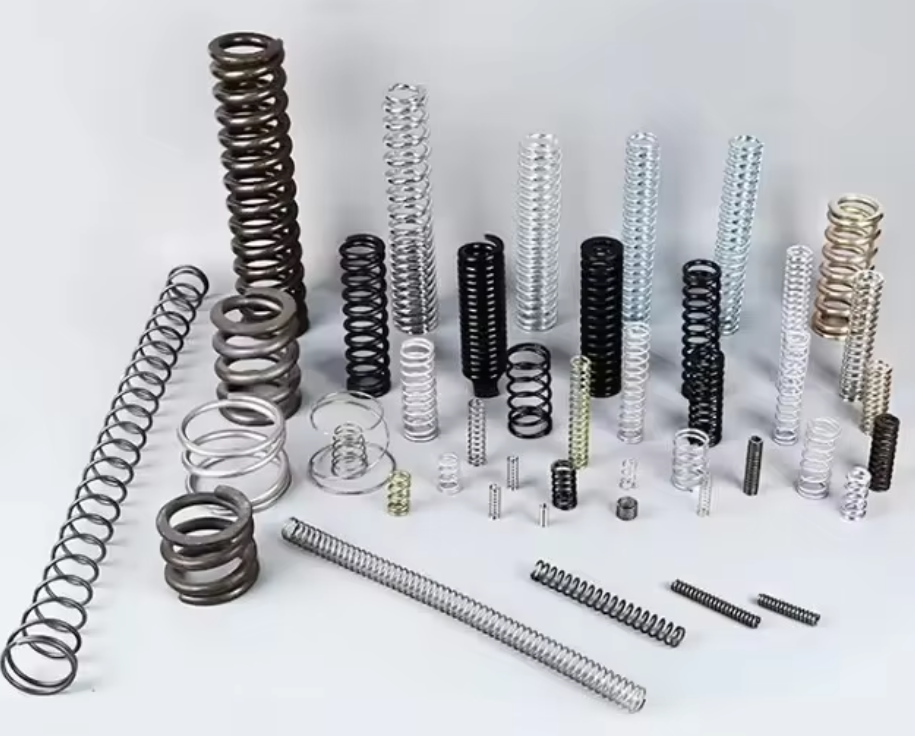
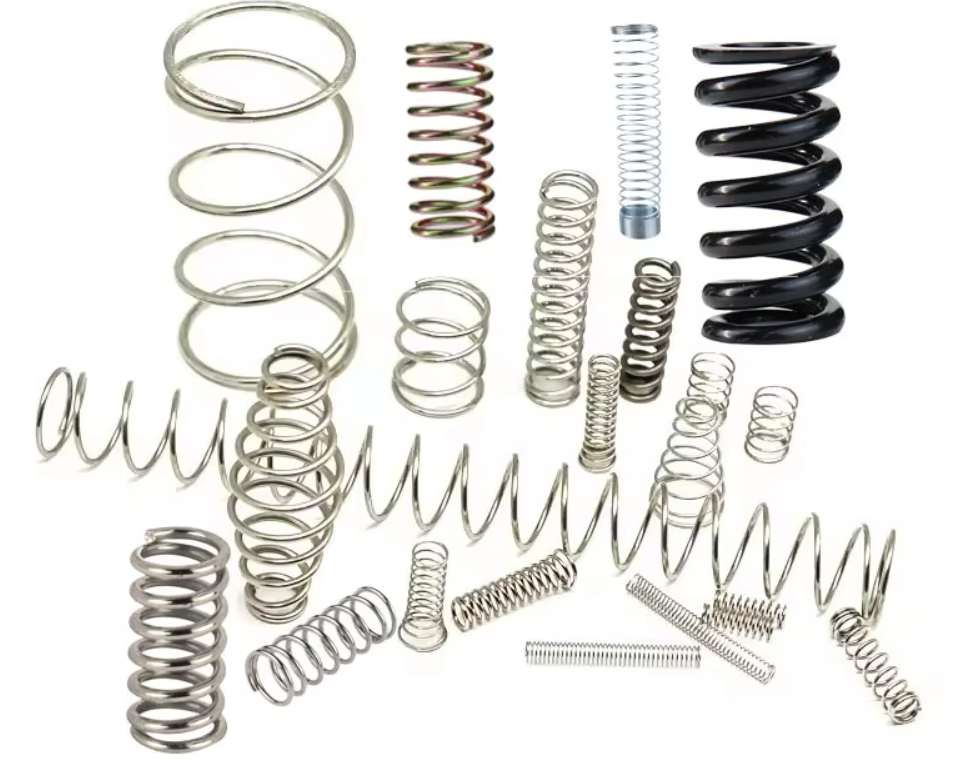
Still unsure which material fits your needs? Let’s discuss your specific application. Whether it’s automotive, aerospace, or precision engineering, we can help you select the perfect material tailored to your requirements.
Would you like a tailored recommendation or a deeper dive into one of the materials? Let’s make your project a success!
E-Mail: sales@linspring.net
Telefon:+86-13599531763
Adresse: Einheit 502, Boden 5, Gebäude B, # 1 Werkstatt, Auto Industry City Parts Support Center (Phase IV), Guankou-Stadt, Jimei-Bezirk, Xiamen,Fujian,China
Wir werden Sie innerhalb von 24 Stunden kontaktieren 1 Arbeitstag.